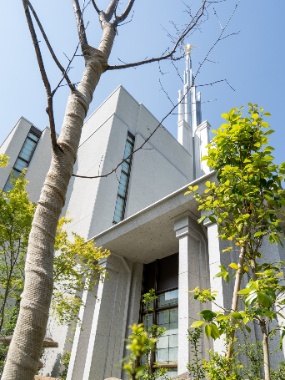
The population of the faithful Latter-day saints increased in the Kanto region over the past thirty years. The Lord has established His Church and the next generation now continues to grow. During this time, some rural units in the area had become smaller due to various reasons, such as the declining birth rate in Japan, people moving to the cities and/or abroad for education, and employment. In order to prepare the area for future Church growth and strength, the Asia North Area Presidency initiated the Kanto Master Plan on November 29, 2019.
One key element of the plan included realigning stake boundaries so that the Tokyo Temple would be more accessible to all five stakes. The highly anticipated rededication of the temple is at the center of all activities this year. While there is not an announced date yet, the eventual opening of the temple will draw members from the temple district to its doors and sacred halls where important ordinances will once again be performed. “There have been demographic shifts in the Kanto area over the last 50 years, and we see the growth of the Church along with it. We saw the need to realign our stakes and missions so that the Tokyo Temple was at the center of every stake and mission. In addition to the temple focus, the plan aims to strengthen the rising generation and the local leadership by gathering them in larger groups and sharing resources where possible,” stated Elder Takashi Wada, Asia North Area President. The names of the continuing stakes are: the Tokyo Stake, the Tokyo West Stake, the Matsudo Stake, the Kanagawa Stake, and the Chiba Stake.
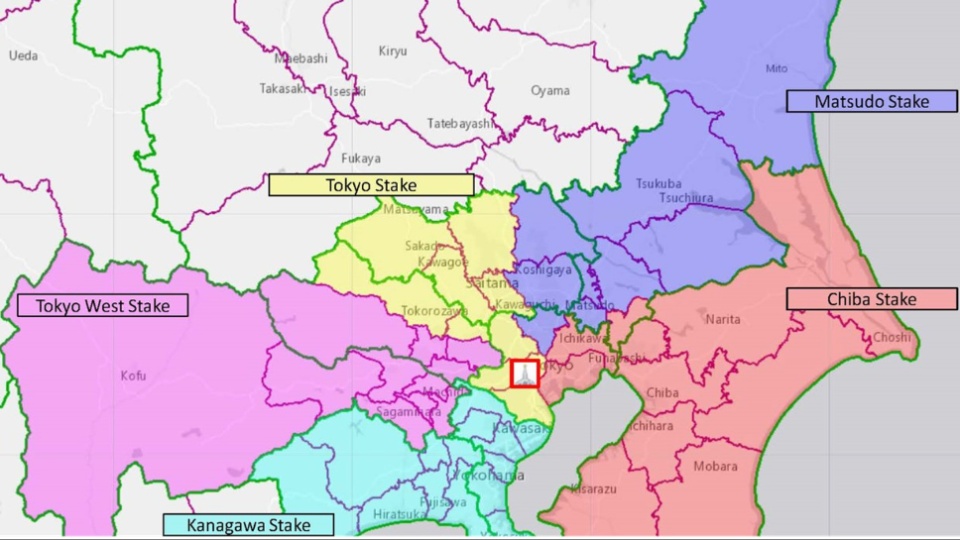
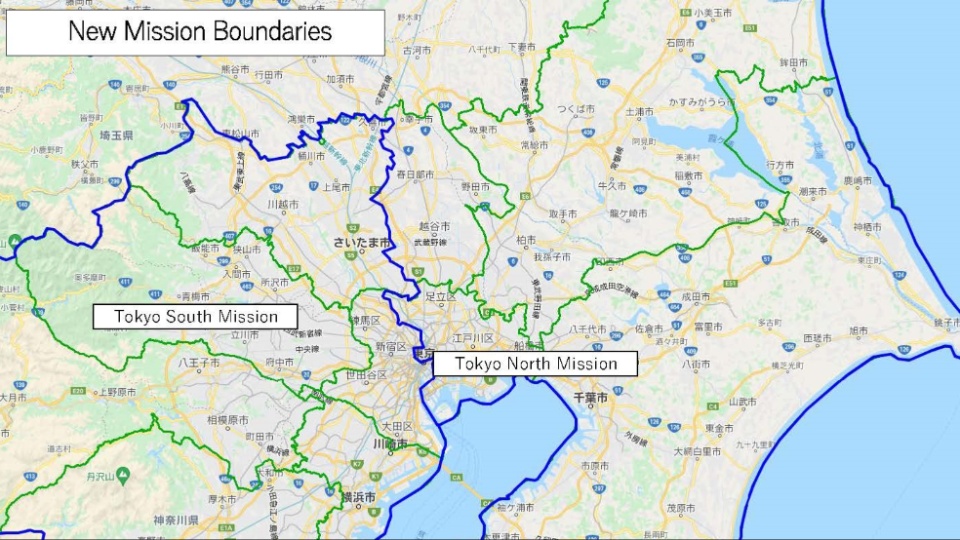
As part of the plan, the use of technology was also considered to minimize travel burdens and time away from family. Specific groups within units would be identified and given virtual access or options for attending sacrament meetings at a meeting house that is closer to their homes. Activities during the week could then be more easily attended. Doing so would build greater priesthood and youth strength. Members in Japan have been quick to embrace technology which has been evident in virtual stake conference and local ward meetings. Church attendance this past year has increased as compared to previous years.

Elder Seiji Tokuzawa, Area Seventy, had many thoughts on his mind when he first accepted to serve as the coordinator of the Kanto Master Plan. “Why is the Lord prompting us to reorganize the stakes now? I wish I could be excused from this task where somebody’s feelings might be hurt. Will we really find the boundaries of each unit the Lord intends to draw?” he pondered to himself. The beginning was full of anxiety.
After spending several sleepless nights, Elder Tokuzawa had a dream in which he saw a great number of youth gathering at the temple. On that day, Elder Tokuzawa clearly understood the concept of the stakes radiating from the temple in every direction. He strongly felt, “If the stake boundaries bordering the Tokyo Temple were possible, many more brothers and sisters, as well as youth members, will receive many blessings, and this is exactly what the Lord wants.”
He quickly proposed the inspired plan of the new stake boundaries, however, several stake presidents indicated their reluctance. “The plan was very difficult from the beginning,” recalled Elder Tokuzawa. Regardless, what the area leaders had in common was a firm ideal that spoke these words, “We will accept and obey the will of the Lord when it is revealed. Until that time, we will continue to council together.”
The fundamental idea of having the temple at the center of all combined stakes, never changed, even though minor details changed as the council meetings continued. The words “temple-centered stake” have been noted several times in the meeting records. “Gradually, the hearts of the council members were united to be one by the Lord,” said Elder Tokuzawa.
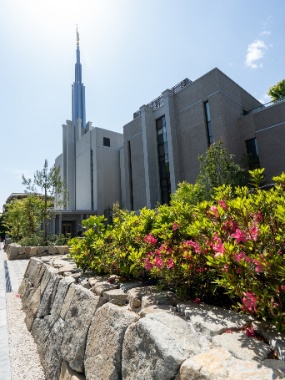
Elder Akinori Ito, Area Seventy, said the execution of the Kanto Master Plan moved forward quickly, but agreed that it was not without a little uneasiness. For example, the name “Yokohama” was replaced when the new name “Kanagawa” was chosen as the continuing stake. Yokohama has historical roots, because it was there in 1901 that Elder Heber J. Grant dedicated Japan for the establishment of the Church. Therefore, some said the name “Yokohama” should be kept. However, President Makoto Onishi of the Fujisawa Stake and President Nobuyuki Sakai of the Yokohama Stake said that the new name “Kanagawa” was a necessary change. The new name indicates that the two stakes are joining as one new stake, not the Fujisawa Stake integrating into the Yokohama Stake.
The name Kanagawa, when written in Japanese, has three kanji characters, the first one means god, the second consists of parts meaning big and to show, and the whole character means fruits (apples) that are used in religious rituals, and the third means river. With the three characters together, they can mean to fill the stake (garden) with the gospel of Jesus Christ. This reminds us of the scripture, “And I, the Lord God, caused a river to go out of Eden to water the garden…” (Moses 3:10). Elder Tokuzawa believes that the use of Kanagawa in a newly organized stake has a special meaning to Christians and emphasizes that it is important for the members of the two combined stakes to work together in unity and move the work of the Lord forward.
Another key component of the plan involved creating a path for success for the youth. Elder Henry Savstrom, Area Seventy, commented that this plan brings youth and young single adults together in a more supportive structure – not only geographically, but socially and spiritually as well. The newly realigned stakes will average ten wards per stake which will provide better balance for future growth. Elder Savstrom stated that he remotely attended most of the stake conferences when the changes were announced. He said, “I received a confirmation that this change was correct.” He also recalled a talk given by Elder Wada regarding temples in Japan, where he asked the question, “Why do we have four temples?” He then stated that Elder Wada’s answer was, “The Church will continue to grow in Japan and the faithful Latter-day saints need to worship in the temple more regularly and frequently.”
President Junpei Domon recalled a recent statement made by Elder Wada who used the words “widely and deeply” to describe the growth of the Church in the Kanto region. It is not just getting larger – the church members also have deeper faith, testimony, and leadership experience. President Domon is one of the newly called stake presidents as of June 6th. He, along with Brother Yuzo Fukawa, are church employees who were participants in the creation of the master plan due to their specific job responsibilities. President Domon is the area meetinghouse facilities manager and Brother Fukawa is the area planning/real estate manager. Together, they supported the area leadership council with demographic assistance.
President Domon stated, “I am humbled to receive a call as the new Stake President of the reorganized Tokyo Stake. I respect and honor those who sacrificed so much to build the stakes of Zion in the Kanto region as well as other parts of the country. Elder John A. McCune taught us that, ‘these changes do not serve the purpose of looking backward but forward.’ I am excited to see the rising generation strengthen their faith in the Lord Jesus Christ. I look forward to the day the Tokyo Temple will be rededicated so we can enter and keep on the covenant path as taught by President Nelson, our living prophet. My hope is that we all seek personal revelation and the strength we need to face life’s challenges and feel joy and happiness in home-centered, gospel living.”
Changes of this magnitude did not come without serious reflection. There would be new callings as well as releases. In the end, the Spirit bore witness that the changes made were divinely received. As the names of the new stake presidents were made known to him, Elder Wada felt his “…heart burn within…” (Luke 24:32) and received his own confirmation.
Elder Wada concluded, “On behalf of the Area Presidency, we are very grateful for those stake presidencies and area seventies, and mission presidents who participated in the master planning. They worked in unity and selflessly, while considering the future of the Church in this area. As the plan progressed, the Area Presidency regularly reported their latest ideas to the senior brethren and obtained their feedback for further improvements. We continued the dialogues until we received the unanimous approval from the First Presidency, Quorum of the Twelve Apostles, and the Presiding Bishopric in May 2021.
“We love those leaders who established the Church thus far, and their faithful service and sacrifice enabled us to consider the next generation of the Church. We felt the Savior’s love and were guided by the power of His atonement from the beginning of the planning until we completed the reorganizations. With these changes, we are grateful for the many leaders, both currently called and those being called in the coming weeks, for magnifying their callings and strengthening the rising generation.”
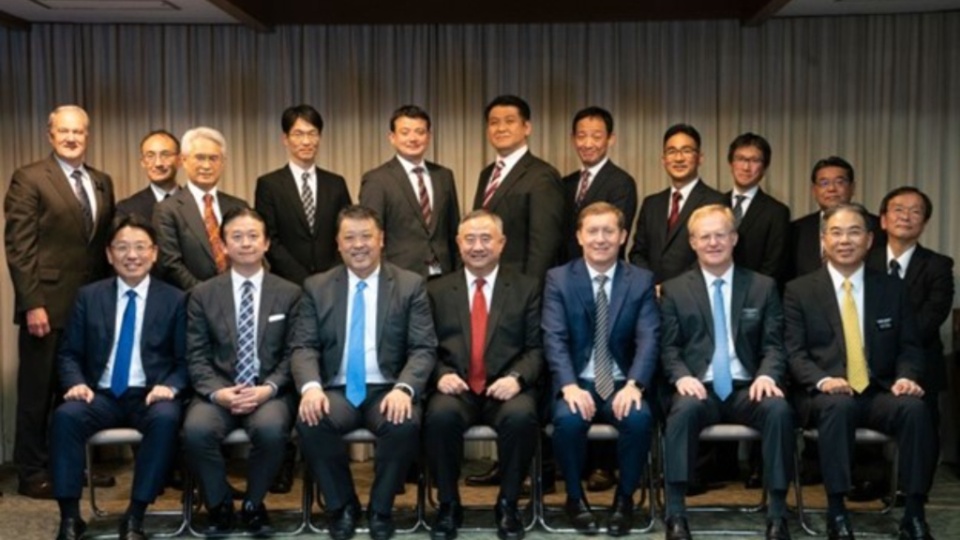
Caption for above picture:
Back row (left to right): Elder Kent Hilton, Executive Secretary to the Area Presidency; Brother Kenichi Mikami, Executive Secretary to the Area Seventy; President Masamichi Kudo, Saitama Stake; President Nobuyuki Sakai, Yokohama Stake; President Henry Savstrom, Machida Stake; President Noritaka Murakami, Tokyo Stake; President Hiroya Tabuchi, Chiba Stake; President Kenichi Toma, Musashino Stake; President Kimiya Yamamoto, Matsudo Stake; 1st Counselor; Hiroshi Kinjo, Matsudo Stake President; President Makoto Onishi, Fujisawa Stake.
Front row (left to right): Elder Akinori Ito, Area Seventy; Elder Seiji Tokuzawa, Area Seventy; Elder Takashi Wada, Asia North Area 1st Counselor in the Area Presidency; Elder Yoon Hwan Choi, Asia North Area President; Elder L. Todd Budge, Asia North Area 2nd Counselor in the Area Presidency; President Kimo Esplin, President Osama Sekiguchi.